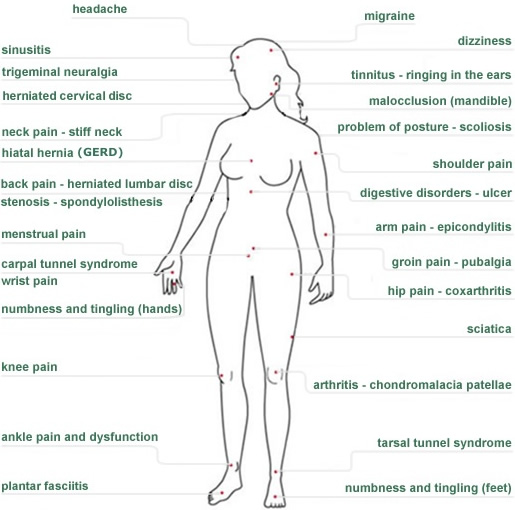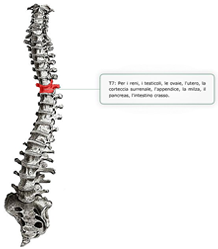The Chiropractic Adjustment Part 2
My previous newsletter described the difference between fixations and subluxations: fixations are two or more contiguous vertebrae that are locked in place while subluxations are misaligned vertebrae or extremity bones.
Symptoms associated with subluxations and fixations include:
- Neck pain and stiffness
- Headache
- Pain in between the shoulder blades
- Low back pain and stiffness
- Sciatica
- Hip and knee pain
- Foot and ankle pain
- Pain shooting down the arm
- Shoulder and elbow pain
- Hand and wrist pain
- Pain and swelling
- Stiffness and restricted movement
- Numbness or tingling
At the turn of the 19th century, DD Palmer, the father of chiropractic, spoke of 'too much or not enough nerve energy' as the cause of disease. We now know that the central nervous system controls every cell in the body. It is therefore imperative to minimize negative influences on our nervous system.
While no profession can profess to cure any disease, the efficacy of chiropractic has stood the test of time. Numerous studies have demonstrated that Chiropractic remediates a wide array of conditions including asthma, infant colic, gastrointestinal problems, and fibromyalgia. Chiropractic adjustments also boost the immune system and alleviate emotional stress.
How do vertebral subluxations happen?
Physical forces such as sitting too long, or stepping too hard off of a curb, can misalign the pelvis, knees, or feet. However, most subluxations are borne out of body chemistry imbalances. Such imbalances arise from many sources including excess histamine from food sensitivities, inflammation from over-exercising, or toxicity from medications, or alcohol. These chemical imbalances “short circuit” neural pathways that travel from our organs to our brains. Subsequent inflammation in the brain then creates patterns of muscle imbalances and skeletal misalignments.
Muscle meridian association
The Chinese use the term Qi to describe the life force that exists in all living things. In the human body, Qi flows through twelve bilateral channels, and two midline channel known as meridians.
There is a meridian/muscle association, just as there is a muscle/organ/gland association. For example, the subscapularis muscle is associated with the heart and its meridian, so heart issues such as arrythmias or tachycardia can effect the flow of the heart meridian and result in shoulder pain.
Likewise, the tensor fascia lata muscle (IT-band) is associated with the large intestine meridian. Conditions such as constipation, or Irritable Bowel Syndrome (IBS), can disrupt the flow of energy in the large intestine meridian, resulting in back, hip or knee pain.
Imbalances in the flow of Qi through the body also causes vertebral subluxations.
Adjacent to either side of our vertebrae are "associated points." Each associated point relates to 1 of the 12 meridians.
For example, the associated point of the L-2 vertebra relates to the kidney meridian. When the flow of energy through the kidney meridian is either insufficient or in excess, the kidney associated point becomes active, and the L-2 vertebra will misalign.
Chiropractors using Applied Kinesiology correct these imbalances by both adjusting the vertebra, and balancing the meridian with different modalities. As such, therapeutic results are more profound and lasting.
Chiropractic adjustments assist the body to heal itself
The body always seeks to heal itself. Some subluxations self-correct, while others require intervention from a qualified practitioner. An analogy is the dresser drawer that gets stuck. To get it gliding again, a forceful thrust is required. Chiropractic adjustments provide that thrust using highly specific adjustments. Relief is often instantaneous.
How important is it to keep the spine in proper alignment?
When verterbreae are misaligned, people will often notice that something is “out.” This can be felt as minor stiffness or irritation in the neck, back, or other area of the body. In more severe cases, vertebral subluxations can cause intense, debilitating pain.
The physiological benefits of chiropractic adjustments are well documented. Regular chiropractic adjustments contribute to good health and keep us feeling better throughout our daily lives.

 SCHEDULE AN APPOINTMENT
SCHEDULE AN APPOINTMENT









